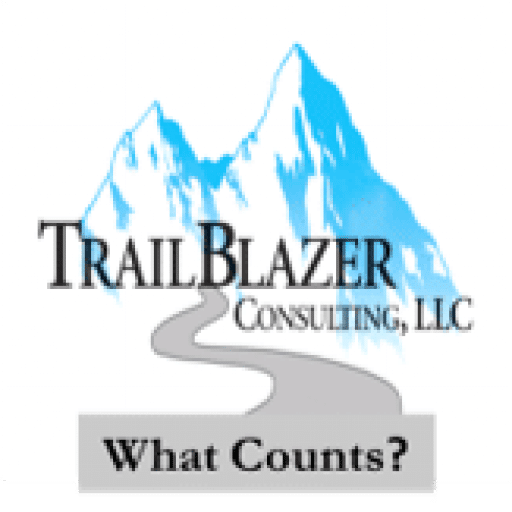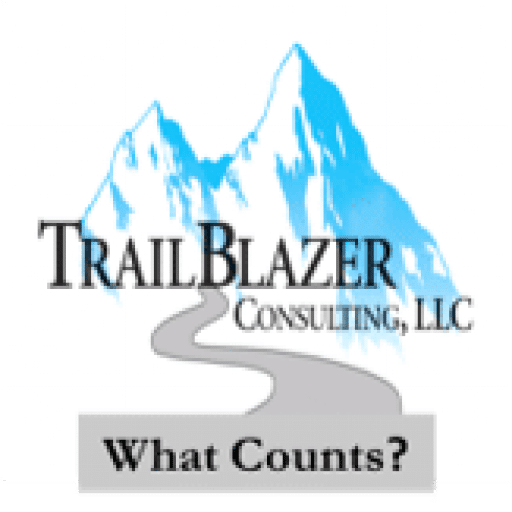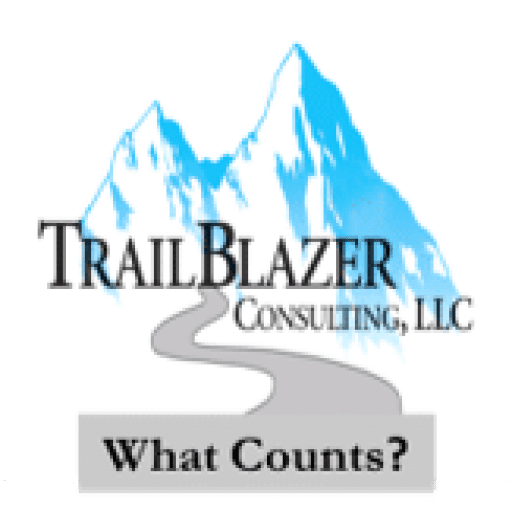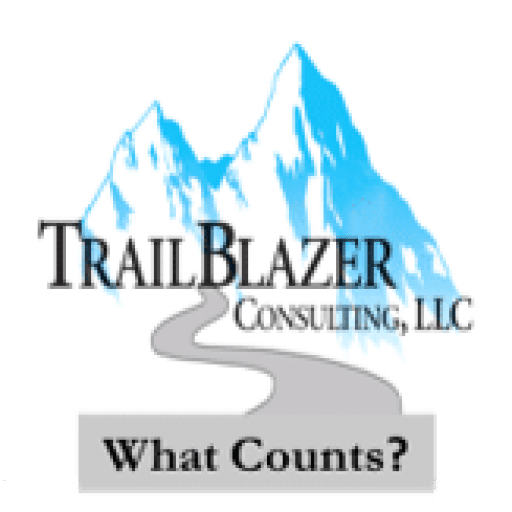[00:00:01] Speaker A: Hello. Thank you for joining us. This is what counts, a podcast created by Trailblazer Consulting. Here we highlight proven solutions developed through our experience working with companies across various industries. And we talk about how you can apply these solutions to your company. We share our experience solving information management challenges, like creating and implementing a records retention schedule, creating an asset data hierarchy, or helping with email management. This is Lee, and in this episode, Maura and I will talk about what an IG professional can do to help users with their data.
[00:00:32] Speaker B: All right, I left everybody last time with a tease of what can the information governance professional do to help power users and end users in the world of self serve data. And now we're back, and I was thinking about a project that I did a few years ago for the New York public Library, actually, and it was around the digitization of their contents, and it was around how to make libraries available digitally. And coming from a librarian background, I'm sure I've mentioned on this podcast before that I am a librarian by training.
The prevailing sort of popular discussions at the time were, oh, we don't need librarians anymore. Everything's out on the web. We can just google it. We can just use a bing search engine, whatever. This was a while ago, Yahoo. And yahoo was new, so.
But the fact is, there's a lot of trashy data out there on the Internet. And I don't mean just like, I'm not trying to make a moral judgment. I'm saying it's just bad data, it's not true, or it's hard to understand. And that's really where we're getting at from this information governance perspective, is there's a lot of data in the world. There's a lot of data in your company, and no one person can really understand all of it. We surpassed the ability for a person to manually address all the data out there ten years ago or more.
You can't process it for retention in a manual way. You can't disposition all the data in your company by looking at every file and figuring out what it is. You can't count on your employees to go and figure out where to file everything manually. And then when it's up for retention review and when it should be dispositioned and making sure all the copies are destroyed, you can't do it. It's too much. Everyone has too much to do. So what is the poor information governance professional to do in the face of this deluge of data and the demand that power users and end users have to let me have that data, I will take care of it myself. What are we going to do?
I started off talking, so I'm going to jump. I'm going to pause here, Lee, and see if you want to offer any ideas.
[00:03:01] Speaker A: No, I was waiting for the what do we do?
[00:03:06] Speaker B: All right, so here's what I think we can do. The first thing is you have in your organization a records retention schedule or a taxonomy. If you don't, that's a good place to start. But if you've been listening to our podcast, if you're regular listeners of what counts, then you know that our records retention schedules and our corporate taxonomies, our enterprise information taxonomies are always based around your business processes. So you group together the data that supports a business process so that you can protect it because presumably it has the same level of information security requirements, so that you can provide access to it, because you have the same type of metadata around it and so that you can disposition it appropriately when it reaches the end of its retention period.
Those same concepts are useful guides when you get into a specific data set or if you're working on a new system implementation and thinking about the metadata and the data structure that you're putting in place. Think about the process. Think about what are the objects that are being sent through this process. So is it an email management solution?
People are sending emails for informational purposes, for transactions, for approvals. Base your email structure, your email retention structure around your retention schedule, around the content and the role that people play based on where they are in the organization is going to be a guide to the type of emails that they are creating. That might be records. You're thinking about a contract management solution in your business. You undoubtedly have contracts kind of on the back end. You're purchasing supplies, you're purchasing services, goods and services.
If you are a b two B type of business, then you have contracts with your customers that are mutual. They could be trade agreements. They could be manufacturing agreements. They could be shipping agreements. There could be all of those things that have to do with your revenue. You may also have legal agreements. You may be engaged in mergers and acquisitions or in joint ventures, or maybe you get sued a lot and you have settlement agreements.
You have different pockets of types of contracts. So think about that structure that's been working for you from a records retention perspective and from an email retention perspective and carry it into your contract management solution. What are the key things that you need to be able to search on, to filter by? How do you want to protect and provide access to buckets of information? Buckets of contracts, document all of that. It's all about documentation. I know we have said before, if you didn't write it down, it didn't happen.
Documenting the structures that you come up with, the definitions of the metadata, the definitions of your lookup tables, your lookup values, the reference data. If the reference data is coming from another enterprise system, what are the parameters that you're using to pull that data from the other system? What's the frequency that you're getting it from the other system? Is it an automatic feed every day? Is it an automatic feed whenever the other system changes? Is it not automatic? But it's scheduled? And how is it scheduled? Is it just when needed? Which means somebody has to remember, if you document all of that, all of that is telling you about this data that's going to be in your new system.
Document it, provide that to your power users, the parts that they need. So the parts that they need, they need to understand how are things organized, how can they search? If they're going to be responsible for maintaining that reference data or for maintaining lookup values, then help them understand the role that the reference data and the lookup values play in this new database.
Then, from your power users to your end users, what do they need to know in order to interpret and understand the data in your new system correctly?
So the information governance job, first, is help build a structure that makes sense and that reflects your enterprise, your business processes, your requirements that you've already defined for other purposes. Don't make up something new.
And second, help the power users, and then the end users get the context that they need in order to correctly understand and use the data in the system.
When it comes down to it, it's kind of boring, but it's what's, but it's what counts. It's what's important.
[00:08:02] Speaker A: I don't think people realize all that at all is my comment, because I'm listening and I'm sitting here going, there is no way that the person in legal realizes that if they're using the appropriate retention and taxonomy related structure, that if they go outside of that, somebody in accounting may not find that piece of data, right? Because it's now, whatever legal did, if it was for environmental, health and safety and they didn't save it in the right spot, it can't be found, right. And so the ramifications of not following a structure are huge. And lost data happens all the time, I'm sure. And that's what people complain about. But it's, how do you harness this? How do you get people to agree that they should stay here? I mean, that's a different subject for a different day because I know there's committees and so forth that should be created and they'll help this process, but there's just so much to this. I don't know if you could cover this in ten minutes.
[00:09:22] Speaker B: Oh, I definitely can't cover it in ten minutes.
I can't cover it in 5 hours with a group of people that we've been working with for two years.
Sometimes it depends on the people been known to happen. But, but you're so putting ourselves in the place of our users. Our users are sitting in their companies where they're part of the everyday world. And hopefully at this point, you all have built up your champion network, your stakeholder network, the kind of key people that you go to every time and say, we have, we collectively have an information problem, and this is, this is what I think we should do next. Let's talk about how we can make this work. So, yeah, it's one step at a time, definitely. And it's also, let's use the tools that we have. So I said, I think at the beginning of this episode, I said, we can't count on individuals to know where to file things and get it right every time. I know, I've talked before about how in the world of cataloging and libraries, two catalogers, when you get to the third or fourth level down of the description process, two catalogers will make different choices. Even sitting next to each other, the same cataloger might look at that same item on a different day and make a different choice, because by the time you get to a certain level, it's kind of could go this way, could go that way.
Even myself, I try really hard to keep my files organized by the client and the type of the project and the part of the project. And yesterday I could not find something that I knew I had and I had to do a search instead of just going right to it. It was a sad day for me, but I did find it, and where I found it was in. It was in the communications folder because this was a thing we needed to communicate about instead of it being in a structural folder where I needed it to be yesterday because I was building another piece of structure. So a more sophisticated enterprise content solution can actually let you have both those tags and find it in both of those virtual folders without making copies. Depending on the size of your organization, you might have those tools so that you don't have to have people think these things through every day. You might have a tool that's a workflow tool, so that at the end of the process of drafting it and sending it for review and getting comments and updating it and sending it for approval, it gets filed automatically so your staff doesn't have to do it. So the information governance profession has a lot of tools at its disposal. Thinking about the business process driven taxonomies using tools like an enterprise content management system teams, a collaboration tool, slack one of those that drives you to okay, here's the topic driven thing. People really like subject matter. Like, oh, we have a subject to talk about. But subjects don't fit neatly into record categories because record categories are more about business function and process. But you can call something a subject on the, on the front end that users see, and on the backend you tag it with the right record category. And so they don't know that they're putting the discussion of metadata into the system documentation folder on the back end so that it gets maintained until the system is inactive. And then for three years after that, they don't have to know that you've set up a collaboration environment where you can get them to have their input, do their review and approval and discussion, and then the records are tagged and appropriately secured and retained on the backside. So there's a lot of power here. And you're right, if you leave it to users, they will change their mind and move things around. And then as soon as they're not in charge of it anymore, somebody else can't find it. Or even they won't be able to find it if it's been five years and they can't go back and remember what their thought process was back in the world of paper. Do you remember? Some of our clients would say, we have a, had a geologic strata version of filing where they would just stack things up on their desk. This one guy that we had who would just stack things up on his desk till it got too high and he knew it was about three inches down. That was probably about a month ago, but then it was a really busy time, so then you had to go six inches down to get to the next month. And when it got too high, he would put it in a folder or he would put it in a drawer or he would put it in a box and then he had to go through the boxes backwards from it was. And he was really just depending on himself.
His memory of I was sitting at my desk and it was a Tuesday, and I put the paper here that doesn't translate to anybody. Nobody can remember that. Nobody has insight into what that guy was doing if he's on vacation. So it's the same thing now. And we as information governance professionals, all of us, all of you out there, we have some ways to intervene so that we set the systems up and prepare the users to understand this data that now in the self serve world, they have a lot more access and that carries with it the risk of getting it wrong.
[00:14:56] Speaker A: I think that's good, because you're absolutely right. Teams, Sharepoint, sharedrives, all that good stuff. You can create folder after folder, but more or less it's the same way as here. Three months ago, I could put everything in this folder called three months. There's a folder called six months. I mean, there's no, when it comes to a person's thinking and a person's filing method, I don't know if there's the same process between two people unless you have a structured approach that IG helps you with.
[00:15:29] Speaker B: Yes, yes, I totally agree.
And then if you go through too far down in the nested folders, if you'll find a file and the file name is too long because it's got all the characters of all the nested folders, and then the name itself, instead of telling you the name is too long, and that in order to open it, you need to pull it out of the folder, what Microsoft at least will tell you is that file can't be found.
That's not true.
It's true that it can't open it, but if you pull it out and put it on your desktop to open it, it works just fine. And then you can put it back into your 50 nested folders. But it's not a very efficient way to work.
That happened yesterday, too.
[00:16:21] Speaker A: If you have any questions, please send us an email at
[email protected] or look us up on the web at www.trailblazer.us.com. thank you for listening, and please tune in to our next episode. Also, if you like this episode, please be a champion and share it with people in your social media network. As always, we appreciate you, the listeners. Special thanks goes to Jason Blake, who created our music.
[00:16:47] Speaker B: Okay, wait, I've got a, what do they call that? Like a postscript during the credits thing to say, just because I can't hold it back. It's like me and the ancient Mesopotamians, the Sumerians.
But today it is this. In the world of science fiction movies in particular, you'll hear characters often say, computer, tell me everything there is to know about x event. And miraculously, the computer serves up pictures, sometimes movies, and a lot of concise data that provides exactly the answer that the character is looking for. But what you don't see there is the information governance professionals behind the scenes who indexed that data and preserved it and time stamped it and time indexed it. In the films where you can say, at 13 seconds it says this. At 35 seconds it says this. Like they do that in tv editing or movie editing. You don't see any of that. You just see the miracle of a computer telling you things. And I feel like ever since at least the 1960s, when Star Trek appeared, premiered, that is what we have to deal with in terms of our end users expectations of any electronic data being immediately available and exactly what they need. So just throwing that out there.
[00:18:17] Speaker A: Okay, thank you.
I think you're right, but, yes.
[00:18:22] Speaker B: Also think that is now what people think AI can do for them.
So, topic for another day.
[00:18:30] Speaker A: I want a hologram to appear. Give me the answers.
[00:18:34] Speaker B: Okay, so you're in the Star Wars place where Leia pops out of R2D2 or whatever.
[00:18:42] Speaker A: Like Tony Stark, Iron Man watch, or whatever it is, the hologram.
[00:18:46] Speaker B: Yep, good point.
That was a little newer than Star Trek.
All right, next time, thank you. All.




